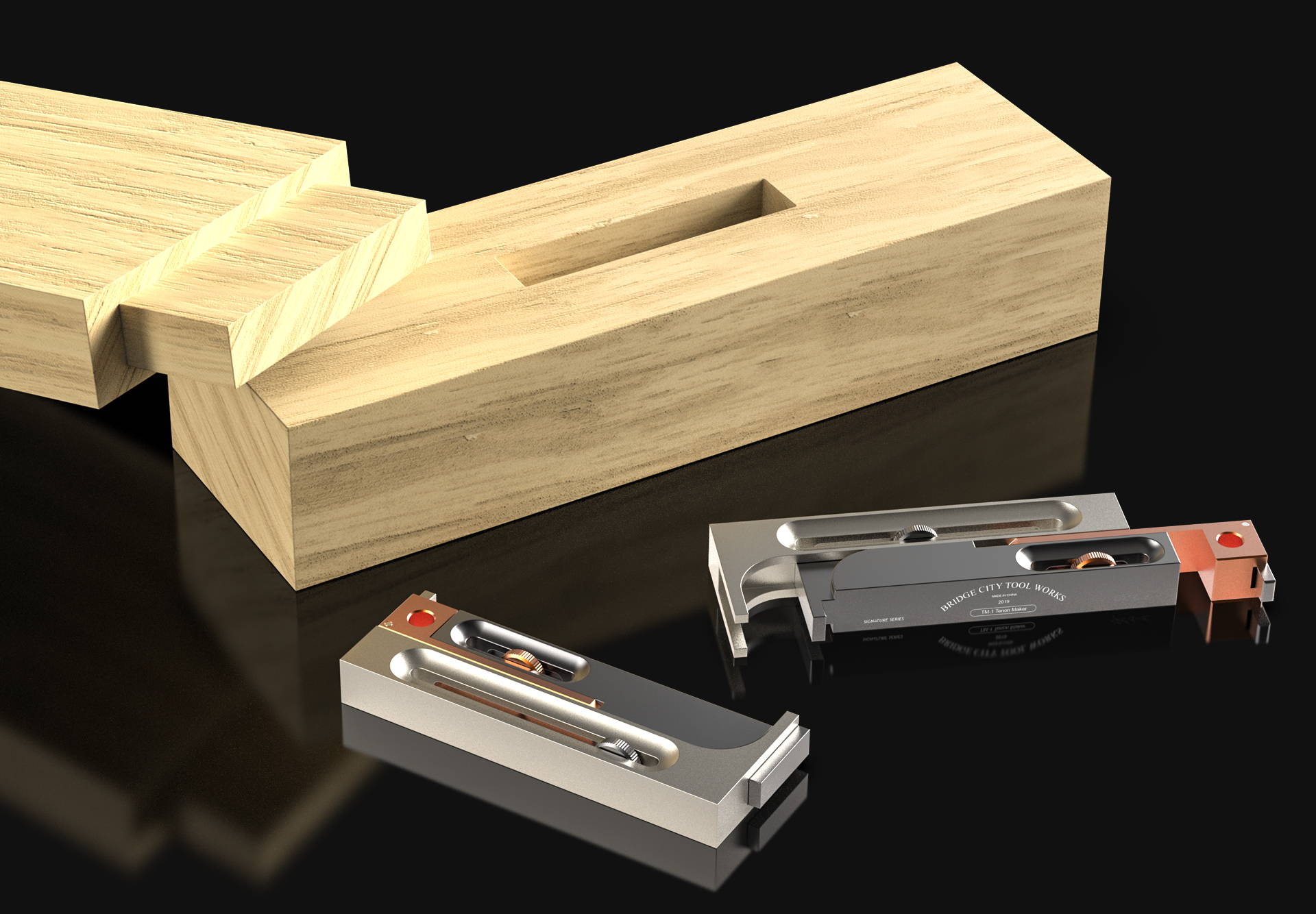TM-1 Tenonmaker


Since ancient times, the mortise and tenon joint has been one of the most classical jointing methods in woodworking. For efficiency and accuracy, the mortise is made before tenon. Also, to avoid a loose fit, the width of kerf and tenon need to be carefully measured and marked by hand, which is complicated and errors can easily occur. Needless to say, aperfect fit is difficult to control.
The TM-1 and KM-1 can avoid the above problem. There is no need to comply with theorder of assembly. Additionally, the measurement of kerf, mortise, and tenon are unnecessary. What you need to do is position the two sliders, and then the precisely fitted joints can be made in three steps.
Three steps for tenon making

The TM-1 consists with one block, two sliders and two locking knobs. Once you confirmthe mortise, precise tenons can be made in three steps.
Step 1 Confirm the width of the kerf

Confirm the width of the blade kerf by using the distance between orange slider and block.
Step 2 Confirm the width of mortise

Confirm the width of mortise by putting the protruding parts of the block and the dark slider into the tenon.
Step 3 Cutting

Cut successively by using the orange slider and the block as a flip stop against the fence to achieve the precise tenon.
Anodized Aluminum
and Glass Bead Blasting

They are made from anodized aluminum and finished by glass bead blasting, which makesthem not only have good anti-friction and high hardness but also the exquisite appearance of matte finishing.
Specification

It's a wise choice for woodworkers to use them in making joints. They can be put in your pocket so that you can use and appreciate them frequently.
"Some images on this page are computer-generated representations of the product and may differ from the actual product. Colors, textures, and other details may not be accurately represented in the images. Please refer to the product description and specifications for more information."
